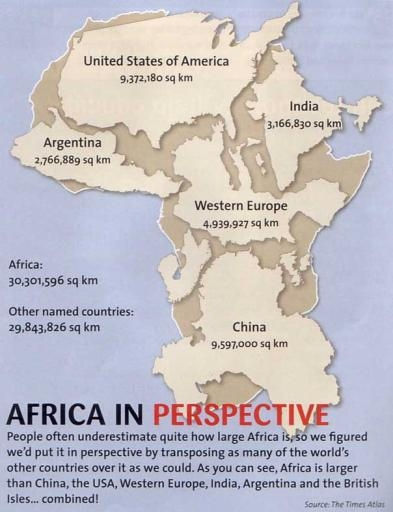- Jul 8, 2008

I found this utterly fascinating.


I found this utterly fascinating.
In the seventh grade, we were taught Modern Math. My teacher, a man with a thick Southern accent whose face looked like one of those dried apple dolls, thought my grasp of the theoretical stuff was good but my basic arithmetic skills were lacking a bit,
so he didn’t want to promote me to Algebra. My father marched down to the school and straightened him out. He never revealed the content of their discussion, but I secretly hoped some brass knuckles were involved.
I excelled in Algebra. Almost pure theory. Geometry set me back a bit, because we were dealing with three-dimensional space. Trig, in the tenth grade, was monstrous. I forget what we had in the eleventh grade, but it was full of polynomials and advanced trig and things that made my brain freeze up.
One thing I took with me along the way, though, was the concept of vectors, and even now I’m not sure I’ve got it quite right.* When you define three-dimensional space graphically, you use a Cartesian coordinate system, with x, y, and z axes.
It’s days like this when I think I’m actually not geeky enough, or I’d be able to explain this better. Please try not to laugh into your corn flakes. You’ll get milk up your nose.
A vector is something that is going in a particular direction (sometimes with a particular mass and/or velocity), and it can be mapped on your 3-D diagram. It is represented by an arrow. But there are usually a number of Somethings, and they’re usually going in different directions at different rates of speed, tugging with different strengths. Now, if all these vectors were connected, were part of a single larger unit, you could calculate where in space and time that unit would go. The stronger vectors might pull one way, the faster ones might pull another, the longer might pull a third. And you’d end up someplace in between. The math would let you calculate where in space and time you’d end up, once all that pushing and pulling were taken into account.
OK, that’s all I know about the technicalia of it. The way I have internalized it is that my life is made up of different needs and desires and forces that pull or push me in different directions simultaneously. My head wants to go three or four different ways, my heart a few others, my spirit others yet, and then there are some parts of me that seem bent on sabotaging all the others. So instead of going in any one direction with any force, I end up this gray lump that is pushed Somewhere, but it’s not clear where I am or where I am going.
Sounds like that dream from the other day, doesn’t it?
I’ve been troubled by the various vectors in my life for some time. Now that I’m taking care of Mom, I’m seeing how her vectors are sabotaging her, too. She has advanced COPD and she’s pretty much bed-bound. She wants to be comfortable, which means she doesn’t want to sit up or do anything taxing, but that means that her cardiovascular system is shutting down, which means her breathing is getting worse, which makes her much more uncomfortable. She would be more comfortable if she could breathe better, she would be happier if she could be more active, but the only way to get there is to stress her body a little at a time and get stronger and rebuild her lung capacity, and she’d rather not, thank you.
Sometimes she can see these contradictions clearly. Sometimes she can’t. Sometimes I’ll say something and she’ll have no recollection of it ever having been mentioned before, and sometimes she’ll be angry that I’m repeating myself for the fiftieth time. It’s not senile dementia or Alzheimer’s, but rather the lack of enough oxygen and probably blood flow in the brain to form new memories that stick, or to retrieve old ones on a regular basis. Whatever the cause, it’s deucedly difficult to deal with, and periodically I feel I’m hanging by my fingernails.
But watching her struggle with her vectors throws my own into such sharp relief that I can’t just ignore them. Part of me—OK, here are more vectors for you—wants to accept them as the multifaceted lump of God that is me, and embrace all the contradictions. Another part of me, though, feels I’m not making progress in my health, in getting my life in order, in preparing for a future without Mom, without someone to take care of, without that constant source of comfort and support. That part of me wonders if some of these little sabotaging vectors can be reversed, redirected, healed, to bring the whole Thing a little closer to my goal, my calling, my heart’s desire, my bliss.
Now, if I only had an inkling what that might be. . . .
Back in the 1960s, when I was a kid, I wore a dark gray fedora to church. Most adult men of that era wore them whenever they wore a suit, though the hat’s popularity was starting to fade.
I know I wasn’t the only boy who wore a fedora to church, but mostly you didn’t start wearing hats until you were a teenager, and I must have been 7 or 8 at the time.
What I remember most about it was that it made my head sweat like the dickens, that I had to keep careful watch over it (it was so easy to leave it on the hat shelf of a coat rack and forget it), and that it made me look like such a little gentleman when I would raise the brim a tiny bit and bow my head briefly in respect when a lady (an adult, not a girl) would walk by. Oh, how they loved that! I didn’t doff my hat, exactly, the way one does in moments of great respect or seriousness or grief, but just tipped it as a sophisticated and respectful greeting.
I don’t think I did that for more than a year. The head-sweating and the fear of misplacing it made me give it up.
It should be noted that I have this Gigantic Bald Spot on my head, which I actually don’t see unless the mirrors are right, so I tend to forget about it. In spite of said GBS, I almost never wear hats unless I’m going to be out in direct sun for an extended period of time, which I try to avoid at all costs. I own two: a straw fedora with a quiet little Mickey Mouse logo on the band (one guess where I bought that one), and a cap—does one call them baseball caps if they’re not worn for baseball?—that a dear friend brought back as a souvenir from her trip to Alaska.
Men in rural areas tend to wear caps. At breakfast at a restaurant in the Deep South, where every human being seemed to be smoking, and they served grits, sausage gravy, and country ham that was drier, saltier, tougher, and more strongly flavored than I could have imagined, every male past puberty wore a cap. I found the same phenomenon at Vermont diners, sans the smoking and with a different breakfast menu. The insignias on the hats mostly advertised hunting supplies or farm equipment: tools, tractors, rifles, feed, seeds.
I never quite “got” the penchant for cap-wearing by rappers and their teenage followers, brims turned backward or sideways, sometimes over a dew-rag. Outside of rural areas and ballparks, caps always seem to look thuggish to me, but then again I am now officially an Old Fogey.
My cap is from McKinley Kennels in Talkeetna, Alaska. My friend proudly told me that she learned they were the only “all-lesbian kennels ever to run the Iditarod.” On the back is emblazoned the kennel’s wonderful motto: “Never trust anyone without dog hair on their clothes.”
I’m not sure what prompted me to look them up on the Internet after all this time, but this morning I found this sad note:
Talkeetna resident Keli Mahoney, 35, died May 28, 2003, as a result of an aviation accident on South Hunter Pass in Denali National Park. The rosary was said June 1, and a Mass was held June 2 at St. Bernard Catholic Church in Talkeetna with the Rev. Leo Walsh as celebrant.
A celebration of her life was held June 2 at the Talkeetna Elementary School gym. Ms. Mahoney (left, with partner LeeAnn Wetzel) was born Feb. 20, 1968, in Quincy, Mass., to Roy and Francis Mahoney, the youngest of six children. At age 16, she became the first female member of the Seven Hill Yacht Club in Boston. A private pilot at age 16, she was a certified flight instructor at 18. After completing a bachelor’s degree at Bridgewater State College, she began flying the east coast corridor for the TWA regional commuter shuttle in 1989, at age 21. Mahoney moved to Bethel, where she flew for Hageland Aviation. In 1993, she relocated to Talkeetna. She was chief pilot for Doug Geeting Aviation for the 1993 and 1994 seasons. In 1995, she and business partner LeeAnn Wetzel began McKinley Air Service, one of only four companies in the United States owned and operated by women. Specializing in ferrying climbers to base camp on Mount McKinley and flightseeing tours of Denali National Park, Ms. Mahoney acted in the capacity of co-owner and chief pilot for McKinley Air from 1995 until the time of her death. She was an avid dog musher. Owner of McKinley Kennels, she raced in the Iditarod Trail Sled Dog Race from Anchorage to Nome in 1997 and 1998, placing as high as 30th. She also ran in the Yukon Quest race between Whitehorse, Yukon, and Fairbanks in 2001 and 2002. An active member of the Talkeetna community, Ms. Mahoney was a member of the volunteer ambulance service and was a volunteer firefighter. Family and friends said: “Keli lived her life to its fullest capacity. There was no boundary she felt she couldn’t cross nor was there a challenge too great for her to tackle.”
This morning I wanted to doff my hat in her memory, but instead I think I’ll just wear it to breakfast. Here’s to you, Keli.
